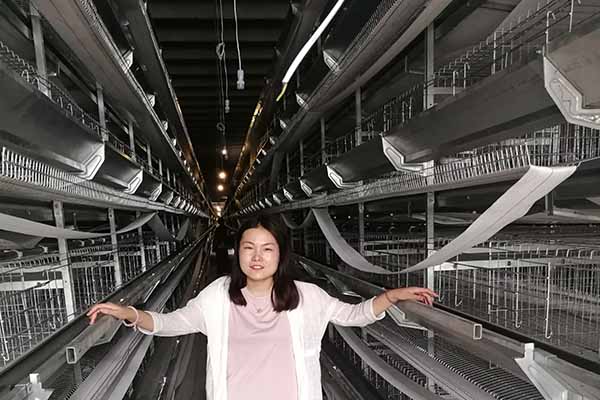Return on Investment of Automated Equipment for Chicken Farms in Kenya
Time : 2025-06-27
Automated equipment has revolutionized various industries, and the poultry sector is no exception. In Kenya, the implementation of automated systems in chicken farms has shown significant promise in enhancing efficiency and profitability. This article delves into the return on investment (ROI) of such automated equipment for chicken farms in Kenya, focusing on the practicalities, professional insights, and the logic behind integrating these systems into the local poultry industry.
Introduction to Automated Equipment for Chicken Farms
Automated systems in chicken farms refer to technologies that automate various aspects of poultry farming, such as feeding, watering, egg collection, and environmental control. In Kenya, the poultry industry is experiencing rapid growth, driven by increased consumer demand for chicken products. This growth necessitates the adoption of more efficient farming practices to ensure sustainable production.
Cost-Benefit Analysis
To assess the ROI of automated equipment for chicken farms in Kenya, it is essential to consider the initial investment cost and the expected benefits over time. Below is a breakdown of these factors:
Initial Investment
The cost of acquiring automated equipment can vary depending on the scale of the farm and the complexity of the systems. Here are some of the typical costs involved:
– Automated Feeders: Prices range from $500 to $10,000, depending on the capacity and features.
– Watering Systems: These systems can cost between $200 and $2,000, depending on the technology used.
– Environmental Control Systems: Costs can range from $1,000 to $20,000, depending on the type of technology.
– Egg Collection Systems: Prices can range from $1,000 to $5,000.
– Other Miscellaneous Equipment: This includes monitoring systems, sensors, and software, which can cost between $500 and $2,000.
The total initial investment can vary from $4,500 to $35,000, depending on the specific requirements of the farm.
Expected Benefits
Automated systems bring numerous benefits to chicken farms, including:
– Increased Productivity: Automated feeding, watering, and egg collection reduce the labor required to run the farm, increasing productivity.
– Enhanced Health and Well-being: Automated systems maintain optimal environmental conditions, leading to healthier chickens and fewer health issues.
– Reduced Costs: Over time, the efficiency gained from automated systems can lead to significant cost savings, such as lower feed consumption and reduced waste.
– Higher Quality Products: Consistent environmental control and efficient processes ensure a higher quality of chicken products.
Calculating ROI
To calculate the ROI of automated equipment for chicken farms in Kenya, one must consider the initial investment and the expected benefits over time. Below is a simplified formula:
$$ ROI = frac{(Benefits – Costs) times 100}{Costs} $$
Benefits
To calculate the benefits, consider the following:
– Increased Productivity: If an automated system saves 10 hours of labor per day, and the daily wage is $50, the savings per day would be $500.
– Enhanced Health and Well-being: With fewer health issues, the farm may reduce veterinary costs by 20%.
– Reduced Costs: Over time, automated systems can reduce feed consumption by 5% and waste by 10%.
Costs
As previously mentioned, the initial investment for automated equipment can range from $4,500 to $35,000.
Using these figures, we can calculate the ROI:
– Scenario 1: If the initial investment is $4,500, and the annual savings are $10,500, the ROI would be 233%.
– Scenario 2: If the initial investment is $35,000, and the annual savings are $45,000, the ROI would be 28.6%.
Conclusion
The ROI of automated equipment for chicken farms in Kenya is significant, particularly for large-scale farms that can afford the initial investment. The benefits of increased productivity, enhanced health and well-being of chickens, and reduced costs make automated systems a valuable investment for the local poultry industry.
Additional Information
For more detailed information on automated systems for chicken farms in Kenya, consider the following:
– Consultation with Experts: Seek advice from professionals in the poultry industry to assess the suitability of automated systems for your specific farm.
– Training and Support: Ensure that you and your staff receive adequate training on how to operate and maintain the automated systems.
– Regular Maintenance: Automated systems require regular maintenance to ensure optimal performance and longevity.












